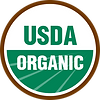Arthritis Guide
Elevate your well-being by approaching it holistically.
We endorse a three-pillared healthy lifestyle method, informed by both personal success and widespread effectiveness, incorporating Self-healing, Nutritional Enhancement, and Herbal Remedies.
These solutions synergize to comprehensively address diverse health issues for optimal well-being.

Our herbal essences offer natural, gentle relief from symptoms, promoting holistic wellness.
Incorporating herbal solutions alongside medical advice can complement your journey to better health.

Benefit From Herbal Remedies
2
Nettle Leaf Tincture
We love stinging nettle, though We know many who don’t due to its sting. It is nutritious, medicinal, and makes beautiful fiber. I even have a nettle shirt! Dock usually grows near it and can be used to take away the sting. It is in the Lamiaceae (Mint) Family.
Edible Use: The leaves are edible. Stinging nettles have a flavor similar to mild spinach when cooked. I eat them raw by folding over the leaves but most people blanch them in water to remove the sting before cooking and eating. Only eat stinging nettle leaves before the flowers appear. Beyond that time, they can cause internal irritation, especially of the urinary tract. The seeds are also edible. Dried nettle leaves and flowers make a nice herbal tea.
Identification: Stinging nettle is a perennial, growing from 3 to 8 feet (0.9m to 2.4m) tall. It is dioecious and herbaceous, dying back in the winter.

The leaves are mostly oval or occasionally heart-shaped. The soft, green leaves are 1 to 4 inches (2.5 cm to 10 cm) long and are arranged oppositely on a square erect stem. The leaves have a serrated margin and cordate base. Both the leaves and stems are very hairy with non-stinging hairs and many stinging hairs. Numerous flowers appear June to September in dense inflorescences. They are greenish or brownish, growing in branched clusters. Male and female flowers grow on separate plants or branches. Stinging nettle is widely distributed, especially where the average annual rainfall is high. I find it in places with moist soil.
Medicinal Use: Nettle can be taken as a tea or tincture and is my number one go to for allergies.
Arthritis, Gout Pain, and Inflammation: Stinging nettle treats arthritis, gout, and other inflammatory conditions. It suppresses inflammation, flushes toxins from the body, and helps reduce the pain of these conditions.

Allergies (including Hay Fever): Stinging nettle tincture is my first recommendation for allergies as it usually completely alleviates the problem. I often recommend coupling it with local raw honey. It is an excellent anti-inflammatory.
It is used in Germany as a treatment for Rheumatoid Arthritis and is thought to inhibit the cascade of inflammation. Externally, a compress made by soaking a cotton pad in nettle tincture and placing it over the painful joint is helpful. Stinging an area can also help restore and repair joint injuries and reestablish nerve communication. I have used it successfully to treat shoulder injuries.
Eczema and Skin Inflammations: Both the internal tincture and infusion of stinging nettle are useful for treating eczema and other skin inflammations.
3
Take Nutrients From Good Food
It's true, we are what we eat. Our food choices influence our energy levels, vitamin intake, blood sugar levels, and beyond. The connection between what we consume and our overall health is undeniable.
Make informed choices, and let your diet become the foundation for a healthier, more vibrant you.






Do you suffer from something else?
Let's figure out your needs and find the right care
As a certified coach, I must get to know the person
before providing tailored solutions.
Let's start a Discovery Dialogue
This is a careful history gathering and checking your suitability for treatment, ascertaining your expectations, discussing treatment options, and ensuring that you understand them – leading to higher satisfaction and successful treatment outcomes.


